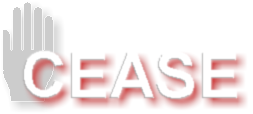
Clergy and Educator Abuse Survivors Empowered!
 |
Clergy and Educator Abuse Survivors Empowered!
|
|
Through networking with other victims/survivors, we can be more effective agents for change within the denomination. Through learning that our stories are not isolated, WE can become less isolated emotionally which will have an exponential impact on our individual healing processes.
|
|
Adventists hold in common many unique doctrines and beliefs, often striving to be "different" and set apart. |
|
|
By choice or perceived necessity, many Adventists have isolated themselves and their institutions from the larger community of Christianity which has resulted in a prevailing belief that the SDA church is not susceptible to abuses plaguing other denominations. |
|
|
The lack of effective administrative procedures for helping primary and secondary victims/survivors heal from abuse within the denomination has resulted in the silencing of victims/survivors who are too intimidated and traumatized to speak out publicly about the injustices that they have suffered at the hands of "God's ordained". |
|
|
Some victims/survivors were betrayed by the SDA doctrines that were used by perpetrators to manipulate and control them within the context of Adventism. |
|
|
As victims/survivors, we need a vehicle to call for change within the SDA denomination and a venue for our voices that will be received by conventional Adventist organizations, institutions and publications as only a publication dedicated to "Adventist" sensitive issues is capable of. |
It is our hope that C.E.A.S.E. will be a means to connect primary and secondary victims/survivors of abuse perpetrated by employees and volunteers of the S.D.A. denomination; to give us all a voice and help us protect others.
A victim/survivor is a term used in C.E.A.S.E. materials to refer to someone who has been abused. At some point in the healing process, persons who have been victimized begin to thrive and identify themselves as survivors. However, use of the term "Survivor" as a label will not feel satisfying if it is used too soon. Each person will determine, in their own time, when they have made the transition from victim to survivor. There does not seem to be a correlation between the label one chooses and the type of abuse, length of the abuse, or other factor.
This term is used to encompass a wide range of boundary violations, including but not limited to:
Sexual abuse of children and adolescents. Adulterous behavior with a client (if clergy is providing counseling), parishioner, employee or student, regardless of the age of the victim. Inappropriate emotional attachment or control of a person in a position of power, authority and trust, over a vulnerable, younger or less seasoned client, parishioner, employee or student.
This is a private e-mail address dedicated to C.E.A.S.E. and mail is confidential. Only those items marked "for publication" will be published online. If you wish your name to be included with your submission, please so state or your name will be omitted. The address "wawknboots" is based on the Nancy Sinatra song "These Boots are Made for Walk'n" because that's just what my boots are do'n!Walk On!
Also, check out: